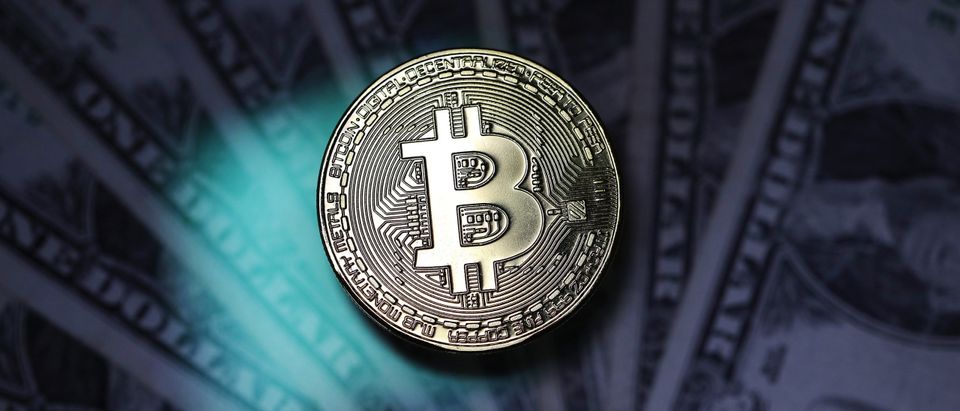Editor’s note: We endeavor to bring you a range of perspectives on the most important issues of the day. Below is a column arguing that the issuance of a digital dollar can streamline the financial system, put money back in Americans’ pockets and avoid the potential for a Chinese-style social credit system with proper Congressional oversight. You can find a counterpoint here, where lawyer Paul Jossey argues how a digital dollar is not worth the risks of handing over Americans’ finances and private lives to government.
Over 40% of Americans almost only ever see their money as numbers on a screen, they never deal with it in the form of physical currency. This isn’t “digital currency,” its physical currency being stored and transferred electronically. While it might be more convenient than physical cash changing hands, finance conducted with electronic currency is still slow and expensive even in the digital era. As such, central banks are investigating digital currencies that can deliver faster and less costly financial transactions.
There are two different approaches that central banks can take in regards to developing their own digital currency. The first option is to create an “algorithmic stablecoin”, a cryptocurrency that is pegged to the value of a real world asset but that is not actually backed by anything. This would be like we were to still have the dollar tied to the value of gold, only the government wouldn’t actually have any physical gold to back it up. Those who are skeptical that a currency of this sort can actually have value are right to question it, as their recent history has proven them to be unreliable.
Algorithmic stablecoins have fallen into disfavor as of late after the preeminent currency of this sort, TerraUSD, collapsed this summer. While the currency itself was tied to the US Dollar, a currency that had actually appreciated in value over that period of time, vulnerabilities led to tens of billions of dollars being wiped out in a matter of days. It is little wonder then that many cryptocurrency experts agree that the future of stablecoins is probably at a dead end, at least for now.
The second and likeliest option for central banks wanting to get into the digital currency game is to launch their own “central bank digital currency” (CBDC), a currency with no physical existence whose value is backed by the government. Apart from having no physical manifestation, CBDCs are effectively identical to fiat physical currencies like the US Dollar, which itself hasn’t been backed by gold or anything other than the government since 1971.
A digital currency would be faster, a central concern of both parties in the creation of a digital dollar. Electronic transfers of cash can take days to go through whereas a digital transfer can be made instantaneously. We all know that time is money, and so using that adage paraphrase another coined by Benjamin Franklin, a second saved is a second earned.
Digital currency can dramatically cut costs for users. For example, when it comes to wire transfers, particularly international ones, fees can routinely run up to $50 per transfer. Further, a digital currency allows users to bypass banks entirely by storing money in private digital wallets, thereby putting an end to all sorts of fees. While $10 or $25 here or there might not seem like much, in the aggregate we have seen banks charge over $8 billion last year alone for overdraft fees alone. Going digital can put that money back in the wallets of everyday Americans instead of allowing banks to soak it up.
But, while a digital dollar would be convenient, it effectively eliminates all privacy in our financial transactions and can become an instrument of social control. This is why China’s central bank has been so eager to speed up the adoption of its digital Yuan. This is a legitimate concern. It can be used to allow central banks to block certain transactions and governments to snoop into people’s finances and payment history. But these questions can be addressed by allowing people to opt out.
To avoid becoming like China, which plans to use digital currency to control its citizens in combination with a social credit score, CBDC cannot and should not replace private cryptocurrencies and physical currency nor should the latter be subject to excessive regulation in favor of CBDC. Instead, coexistence and competition between the three ensures skeptics are never forced to use CBDC and can avoid any risks they might associate with it while proponents still get to use it.
At the business and individual level, making sure that the use of CBDC is never required is fairly easy. The average consumer can avoid CBDC by not acquiring it – just as one can avoid using the many types of cryptocurrency available. Retailers can treat CBDC like credit cards, personal checks, or cryptocurrency and refuse it as payment. Congress can add additional safeguards should it decide to allow a digital dollar. Market forces will sort out the rest, as people and sectors can decide, weighing the benefits and risks of each, which payment system they prefer.
Nicholas Creel is an assistant professor of business law at Georgia College and State University. Gavin Incrocci is a student at Georgia College and State University who is studying cryptocurrency and cyber-law under Professor Creel.
The views and opinions expressed in this commentary are those of the author and do not reflect the official position of the Daily Caller.


